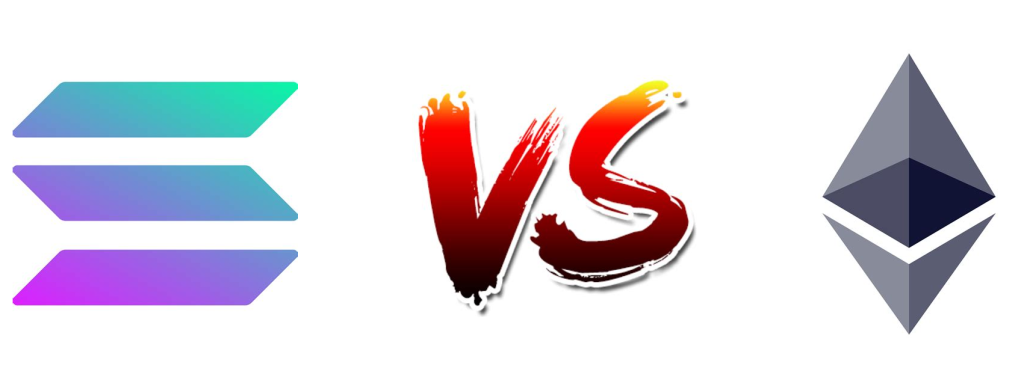
Solana vs. Ethereum: A Comparative Analysis
Preamble
As blockchain technology continues to evolve, several platforms have emerged as leaders in the space, each offering unique features and benefits. Among these, Solana and Ethereum are two of the most prominent and widely used blockchain platforms. Both have their strengths and weaknesses, and understanding the differences between them can help developers, investors, and users make informed decisions. In this article, we will compare Solana and Ethereum across various key metrics to highlight their distinctions.
Key Comparison Points:
- Scalability
- Transaction Speed
- Transaction Fees
- Consensus Mechanism
- Smart Contract Capability
- Ecosystem and Adoption
Comparison Chart: Solana vs. Ethereum
| Feature | Solana | Ethereum |
|---|---|---|
| Scalability | Highly scalable, up to 65,000 TPS | Limited scalability, around 15-30 TPS |
| Transaction Speed | Extremely fast, average block time of 400 ms | Slower, average block time of 13-15 seconds |
| Transaction Fees | Very low, fractions of a cent | Higher, can be significant during high demand (Gas fees) |
| Consensus Mechanism | Proof of History (PoH) + Proof of Stake (PoS) | Proof of Stake (PoS) with Ethereum 2.0 (previously Proof of Work – PoW) |
| Smart Contract Capability | Robust smart contract support with Sealevel for parallel execution | Strong smart contract support with Solidity and the Ethereum Virtual Machine (EVM) |
| Ecosystem and Adoption | Growing ecosystem with DeFi, NFTs, and Web3 projects | Largest ecosystem with extensive DeFi, NFTs, and enterprise solutions |
Detailed Comparison:
- Scalability
- Solana: Solana is designed with scalability in mind, capable of handling up to 65,000 transactions per second (TPS). This high throughput is achieved through its innovative Proof of History (PoH) mechanism, which allows for parallel processing of transactions.
- Ethereum: Ethereum has historically faced scalability issues, managing only about 15-30 TPS. However, with the ongoing upgrade to Ethereum 2.0, which transitions the network from Proof of Work (PoW) to Proof of Stake (PoS), scalability improvements are anticipated.
- Transaction Speed
- Solana: Transactions on the Solana network are incredibly fast, with an average block time of just 400 milliseconds. This speed makes Solana an attractive option for high-frequency applications.
- Ethereum: Ethereum’s average block time is around 13-15 seconds. While this is slower compared to Solana, it is expected to improve with the full implementation of Ethereum 2.0.
- Transaction Fees
- Solana: One of Solana’s significant advantages is its low transaction fees, often just a fraction of a cent. This makes it ideal for applications that require frequent transactions.
- Ethereum: Ethereum’s transaction fees, known as gas fees, can vary significantly and become quite high during periods of network congestion. The transition to Ethereum 2.0 aims to reduce these fees.
- Consensus Mechanism
- Solana: Solana utilizes a unique combination of Proof of History (PoH) and Proof of Stake (PoS) to secure its network. PoH provides a historical record of transactions, while PoS involves validators staking their tokens to validate transactions.
- Ethereum: Ethereum is transitioning from PoW to PoS with Ethereum 2.0. This upgrade aims to enhance scalability, security, and energy efficiency.
- Smart Contract Capability
- Solana: Solana supports robust smart contract functionality through its Sealevel runtime, which allows multiple smart contracts to run in parallel. This increases efficiency and speed.
- Ethereum: Ethereum is well-known for its smart contract capabilities, utilizing Solidity as its primary programming language and the Ethereum Virtual Machine (EVM) to execute smart contracts.
- Ecosystem and Adoption
- Solana: Solana’s ecosystem is rapidly growing, with numerous projects in decentralized finance (DeFi), non-fungible tokens (NFTs), and Web3 applications. Its low fees and high throughput make it an attractive platform for developers.
- Ethereum: Ethereum boasts the largest and most established ecosystem in the blockchain space. It has a vast array of DeFi projects, NFT marketplaces, and enterprise solutions, making it the go-to platform for many developers and enterprises.
Conclusion
Both Solana and Ethereum offer unique advantages and cater to different needs within the blockchain ecosystem. Solana’s high scalability, fast transaction speeds, and low fees make it an excellent choice for applications requiring high throughput. On the other hand, Ethereum’s robust ecosystem, extensive adoption, and upcoming improvements with Ethereum 2.0 continue to make it a dominant player in the space. Understanding these differences can help you choose the right platform for your blockchain needs.
